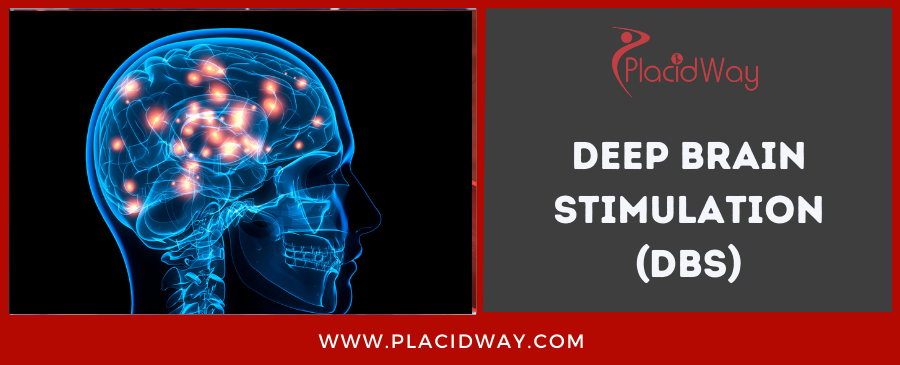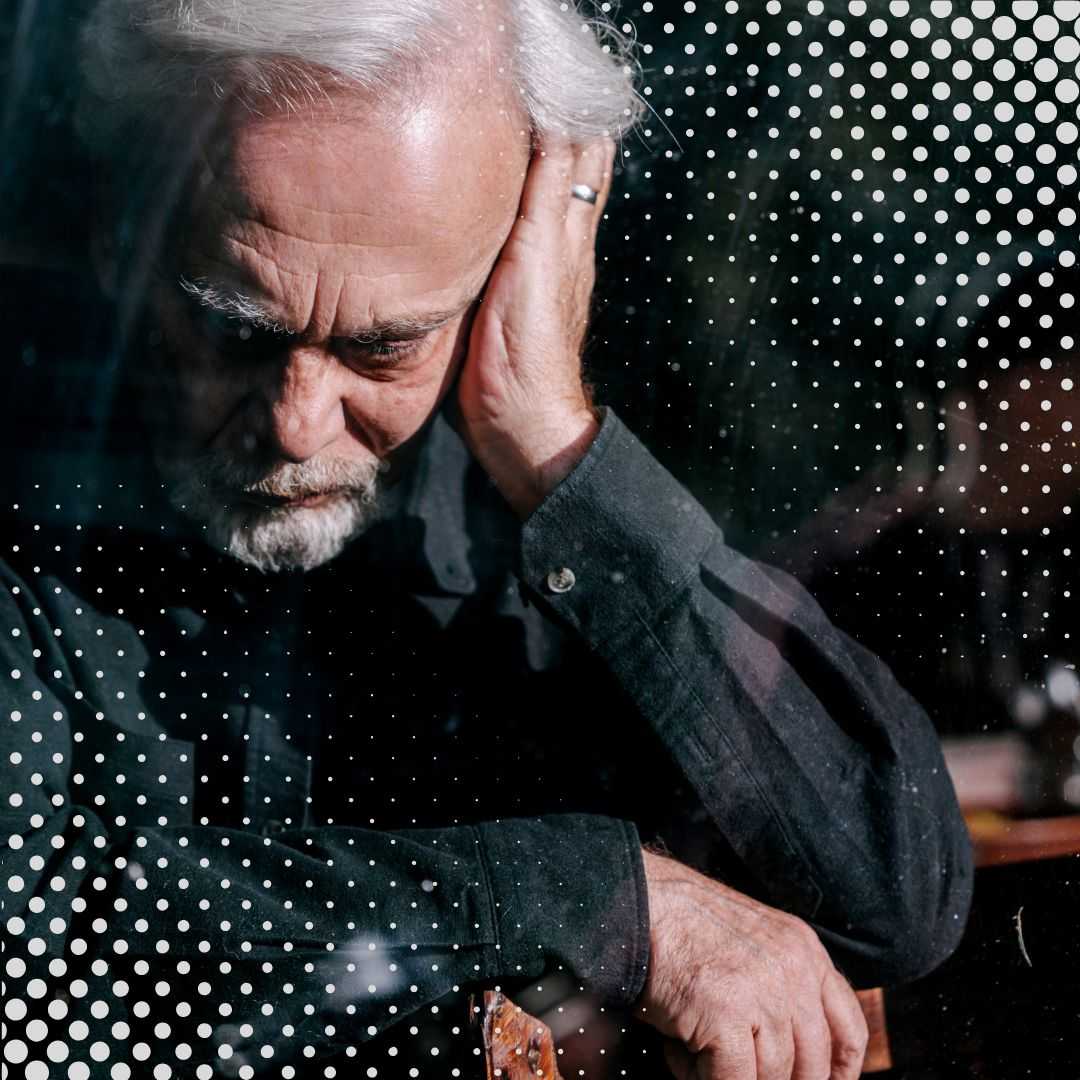
Deep Brain Stimulation (DBS): A New Path to Freedom from Movement Disorders
Living with a movement disorder can feel like being trapped within your own body. Conditions like Parkinson's disease, essential tremor, and dystonia can steal your independence, making everyday tasks a struggle and dimming the light of your daily life. If medications no longer offer sufficient relief, or if their side effects are becoming unmanageable, you might be searching for advanced solutions. Deep Brain Stimulation (DBS) offers a beacon of hope, a scientifically proven procedure that can dramatically improve symptoms and restore a greater sense of control and quality of life.
Imagine regaining the ability to eat without tremors, walk with more stability, or speak more clearly. For many, DBS turns this imagination into reality. This innovative neurosurgical procedure involves implanting small electrodes in specific areas of the brain, connected to a pacemaker-like device that delivers mild electrical pulses. These pulses help to regulate abnormal brain activity, much like a pacemaker regulates the heart, thereby reducing debilitating symptoms.
For those considering medical treatment, especially for complex procedures like DBS, exploring options beyond borders can open doors to world-class care, advanced technology, and often more affordable prices. Many international patients search for "DBS surgery cost abroad," "best countries for Parkinson's treatment," or "medical tourism for essential tremor." This guide will explore everything you need to know about Deep Brain Stimulation, from how it works and who it helps, to what to expect during recovery and why pursuing treatment abroad might be the right choice for you.
What symptoms and neurological conditions can Deep Brain Stimulation (DBS) treat?
Deep Brain Stimulation is most commonly used to alleviate the severe motor symptoms associated with several specific neurological conditions, especially when these symptoms are no longer adequately controlled by medication or when medication side effects become intolerable. The primary conditions DBS effectively treats include:
- Parkinson's Disease: For patients with advanced Parkinson's, DBS can significantly reduce:
- Tremor: Involuntary rhythmic shaking, often at rest.
- Rigidity: Stiffness and inflexibility of the limbs and neck.
- Bradykinesia: Slowness of movement, affecting initiation and execution of voluntary movements.
- Dyskinesia: Involuntary, erratic, writhing movements, often a side effect of long-term Levodopa therapy.
- "Off" periods: Times when medication is not working, and symptoms return severely.
- Essential Tremor: This is one of the most common movement disorders, characterized by involuntary, rhythmic shaking, most often affecting the hands during voluntary movements like eating, writing, or drinking. DBS can provide substantial relief from this disabling tremor.
- Dystonia: A disorder causing involuntary, sustained muscle contractions that result in twisting and repetitive movements or abnormal fixed postures. DBS can help reduce these painful and debilitating movements in certain forms of dystonia.
Patients often search for "DBS for Parkinson's symptoms," "essential tremor treatment options," or "dystonia surgery success rates" to understand how DBS can specifically address their challenges.
What causes movement disorders like Parkinson's and Essential Tremor?
Understanding the underlying causes helps appreciate how DBS works to restore balance in the brain. While the exact causes can be complex and are still being researched, here's a general overview:
- Parkinson's Disease: The hallmark of Parkinson's is the progressive loss of dopamine-producing neurons in a specific area of the brain called the substantia nigra. Dopamine is a neurotransmitter crucial for smooth, coordinated movement. Without enough dopamine, brain circuits become unbalanced, leading to the characteristic motor symptoms. Genetic factors, environmental toxins, and aging are thought to play roles, but the precise trigger remains unknown for most cases.
- Essential Tremor: Unlike Parkinson's, essential tremor is not caused by dopamine deficiency. It's believed to originate from abnormal electrical activity in specific brain circuits, particularly involving the cerebellum and other structures that control motor function. Genetics play a significant role, with many cases being familial (autosomal dominant inheritance).
- Dystonia: Dystonia is thought to involve dysfunction in the basal ganglia, a group of structures deep within the brain that help initiate and control movement. This dysfunction leads to miscommunication between brain cells, resulting in involuntary muscle contractions. Dystonia can be genetic, drug-induced, or secondary to other brain injuries.
Many patients ask, "Is Parkinson's inherited?" or "What causes tremors in hands?" seeking clarity on their condition's origins.
How does Deep Brain Stimulation (DBS) work to alleviate symptoms and improve life?
Deep Brain Stimulation is an elegant solution to a complex neurological problem. It doesn't cure the underlying disease, but it effectively manages the symptoms by altering abnormal brain activity. Here's a simplified explanation:
- Targeted Placement: During a highly precise surgical procedure, thin, insulated wires (electrodes) are implanted into specific target areas deep within the brain. For Parkinson's, common targets include the subthalamic nucleus (STN) or the globus pallidus interna (GPi). For essential tremor, the ventral intermediate nucleus (VIM) of the thalamus is often targeted. The choice of target depends on the specific condition and symptoms.
- Connection to a Neurostimulator: These electrodes are then connected by wires that run under the skin, down the neck, to a small, battery-operated device called a neurostimulator (similar to a pacemaker). This device is typically implanted under the skin near the collarbone.
- Electrical Modulation: Once activated, the neurostimulator delivers continuous, mild electrical pulses through the electrodes to the targeted brain region. These pulses interfere with and help normalize the abnormal electrical signals in the brain that cause symptoms like tremor, rigidity, and slowness. Think of it like a "pacemaker for the brain" that helps recalibrate brain circuits.
- Customized Programming: A crucial aspect of DBS is the post-surgical programming. A specialist uses a remote control to adjust the stimulation settings (voltage, pulse width, frequency) to optimize symptom control and minimize side effects. This process is tailored to each individual and can be adjusted over time as needed.
Patients often wonder, "Is DBS a permanent cure?" (No, it's symptom management) or "How does DBS stop tremors?" (By modulating abnormal brain signals).
Who is an ideal candidate for Deep Brain Stimulation (DBS) surgery?
Not everyone with a movement disorder is a candidate for DBS. A comprehensive evaluation by a multidisciplinary team (neurologist, neurosurgeon, psychiatrist/psychologist) is crucial. Key criteria for eligibility often include:
- Diagnosis Confirmation: A clear diagnosis of Parkinson's disease, essential tremor, or dystonia.
- Symptom Severity & Response to Medication:
- Parkinson's: Typically, patients who have had Parkinson's for at least 4-5 years, whose motor symptoms (tremor, rigidity, bradykinesia) are significantly disabling despite optimal medication, and who experienced good initial benefit from Levodopa but now have "wearing-off" periods or troublesome dyskinesias.
- Essential Tremor: Patients with severe, disabling tremor that significantly interferes with daily activities (eating, drinking, writing) and has not responded adequately to multiple medication trials.
- Dystonia: Patients with severe, generalized or segmental dystonia that significantly impairs quality of life and is refractory to medical management.
- Overall Health: Good general physical health, without severe heart, lung, or kidney disease, or other conditions that would make surgery too risky.
- Cognitive and Mental Health: No severe dementia, untreated major depression, or psychosis, as these conditions can worsen after DBS or complicate post-operative care.
- Realistic Expectations: Patients must understand that DBS is a symptom-management therapy, not a cure, and requires ongoing adjustments and maintenance.
Common patient searches include "DBS eligibility criteria," "who qualifies for Parkinson's surgery," and "is DBS safe for older patients?"
What is the recovery process and long-term outlook after DBS surgery?
The journey with DBS extends beyond the operating room. Recovery is a multi-stage process with significant long-term benefits:
- Immediate Post-Surgery (Days 1-7): Patients typically spend a few days in the hospital. The focus is on managing pain, monitoring for complications, and ensuring stable recovery from anesthesia. Headaches, swelling, and mild discomfort at the incision sites are common.
- Early Recovery (Weeks 2-4): Most patients can return home. Physical activity is restricted (no heavy lifting or strenuous exercise) to allow incisions to heal and prevent displacement of the leads. The DBS device is usually not activated immediately.
- Device Activation & Programming (Weeks 3-6 onwards): This is a crucial phase. After initial healing, the neurostimulator is turned on and programmed by a neurologist or specialized nurse. This often involves several follow-up appointments over weeks or months to fine-tune the settings, adjusting the electrical impulses to maximize symptom relief and minimize side effects. It's an ongoing process, much like finding the right balance for medication.
- Long-Term Outlook: For suitable candidates, DBS can provide significant and lasting improvement in motor symptoms, reducing tremors, rigidity, and dyskinesia. This often translates to:
- Improved ability to perform daily activities (eating, dressing, walking).
- Reduced reliance on Parkinson's medications, potentially lowering side effects.
- Enhanced overall quality of life and greater independence.
DBS does not stop the progression of the underlying disease, but it can provide years of improved symptom control. Patients often ask, "How long does DBS last?" (The device battery lasts 3-5+ years, then replaced; the effect can last for many years) and "What is life like after DBS surgery?"
What are the potential risks and side effects associated with Deep Brain Stimulation (DBS) surgery?
While generally safe and highly effective for selected patients, DBS is a brain surgery and carries inherent risks, as well as potential side effects once the device is activated:
Surgical Risks (similar to any brain surgery):
- Bleeding in the Brain (Hemorrhage): A serious but rare risk that can lead to stroke.
- Infection: Can occur at the incision sites or around the implanted hardware, potentially requiring antibiotic treatment or device removal.
- Stroke: Although rare, it can result from bleeding or other complications during surgery.
- Seizures: Can occur during or after the procedure.
- Confusion or Memory Problems: Usually temporary, especially in older patients.
Device-Related Risks:
- Lead Misplacement or Fracture: The electrodes or wires can shift or break, requiring further surgery.
- Device Malfunction: The neurostimulator battery may fail (requiring replacement) or the device itself may malfunction.
- Skin Erosion: The device or wires can sometimes erode through the skin.
Side Effects from Stimulation:
These are typically manageable by adjusting the programming of the DBS device:
- Speech difficulties (dysarthria)
- Balance problems or gait disturbances
- Muscle contractions or stiffness
- Mood changes (e.g., apathy, depression, anxiety)
- Tingling sensations (paresthesia)
- Weakness or numbness
- Vision problems (e.g., double vision)
It's crucial to discuss all potential risks with your medical team. Patients often search for "DBS surgery complications" or "deep brain stimulation risks."
How much does Deep Brain Stimulation (DBS) cost worldwide?
The cost of Deep Brain Stimulation is a significant factor for many patients, especially when considering options abroad. Prices can fluctuate dramatically based on geographic location, the healthcare system, the reputation of the clinic and surgeon, the type of DBS device used (rechargeable batteries generally cost more upfront but save on future replacement surgeries), and the extent of pre-operative and post-operative care included.
| Country/Region | Estimated DBS Cost (USD) | Key Factors Affecting Cost |
|---|---|---|
| USA | $90,000 - $150,000+ | High overheads, insurance complexities, advanced technology, leading specialists. |
| Western Europe (UK, Germany) | $70,000 - $120,000 | Advanced medical facilities, high-quality care, but often lower than US. |
| India | $25,000 - $50,000 | Very competitive pricing, experienced neurosurgeons, modern facilities. |
| Mexico | $35,000 - $60,000 | Proximity for North Americans, growing medical tourism infrastructure, good quality. |
| Turkey | $30,000 - $55,000 | Strategic location, modern hospitals, highly skilled surgeons, strong medical tourism. |
| Thailand | $35,000 - $65,000 | Excellent patient services, world-class hospitals, attractive tourism destination. |
These figures are estimates and can vary. They typically include the surgical procedure, the device itself, hospital stay, and initial post-operative programming sessions. It's crucial to get a detailed quote that outlines everything included. Patients often search for "DBS surgery cost comparison," "affordable DBS treatment," or "medical tourism for Parkinson's disease."
Why consider Deep Brain Stimulation (DBS) treatment in another country?
For many individuals and families, the decision to seek medical treatment abroad, especially for a complex procedure like DBS, is driven by a combination of compelling factors:
- Cost Savings: This is often the primary motivator. The same high-quality DBS procedure can be significantly more affordable in countries known for medical tourism compared to the US or Western Europe, often saving 50-70% or more.
- Access to Specialized Care and Technology: Many international hospitals have invested heavily in state-of-the-art neurosurgical equipment and employ highly trained, board-certified neurosurgeons with extensive experience in DBS, often trained in Western countries.
- Reduced Wait Times: In some national healthcare systems, long waiting lists for elective surgeries can delay vital treatment. Traveling abroad can provide immediate access to necessary care.
- Privacy and Anonymity: Some patients prefer the discretion and anonymity that medical travel offers.
- Opportunity for Travel and Recovery: Combining a medical procedure with a recovery period in a new, often beautiful and relaxing environment, can be an attractive bonus.
Patients searching for "DBS surgery abroad reviews" or "benefits of medical tourism for neurological conditions" often explore these advantages.
Which countries are top destinations for affordable and high-quality DBS surgery?
Several countries have established themselves as leaders in medical tourism for complex procedures like DBS, offering a compelling combination of quality, affordability, and patient support:
- India: Renowned for its highly skilled neurosurgeons, state-of-the-art hospitals (many with international accreditations like JCI), and significantly lower costs. India is a global hub for neurological surgeries, attracting patients worldwide.
- Mexico: Especially popular with North American patients due to its proximity. Mexico offers modern facilities, English-speaking staff, and reputable neurosurgical teams, often at a fraction of US prices.
- Turkey: With its strategic location bridging Europe and Asia, Turkey has invested heavily in its healthcare infrastructure. It boasts numerous JCI-accredited hospitals offering advanced DBS procedures with experienced specialists and excellent patient care.
- Thailand: Known for its luxurious hospitals, world-class medical professionals, and exceptional patient hospitality, Thailand offers high-quality DBS at competitive prices, coupled with a pleasant recovery environment.
- South Korea and Singapore: While potentially at a higher price point than India or Turkey, these countries also offer incredibly advanced medical technology, highly skilled surgeons, and rigorous quality standards, attracting patients seeking the absolute cutting edge of care.
When searching, look for "best hospitals for DBS abroad" or "top countries for neurological surgery."
What should I expect when traveling for DBS abroad, and how do I ensure quality care?
Traveling for DBS requires careful planning and due diligence to ensure a smooth journey and high-quality outcomes. Here’s what to expect and how to prepare:
What to Expect:
- Initial Consultation & Evaluation: Typically done remotely through medical records, imaging, and sometimes teleconsultations. The overseas medical team will assess your candidacy.
- Travel Arrangements: Medical tourism facilitators (like PlacidWay) can assist with flights, accommodation, visas, and local transport, often providing a dedicated coordinator.
- Pre-Operative Tests: Upon arrival, you'll undergo thorough in-person evaluations, including neurological assessments, MRI scans, and psychological evaluations.
- The Procedure & Hospital Stay: DBS surgery usually involves a few days in the hospital for monitoring and initial recovery.
- Post-Operative Care & Programming: This is critical. You'll need to stay for several weeks (typically 3-6 weeks) for initial healing and the crucial programming sessions to optimize the device settings.
- Follow-Up: Establish a plan for long-term follow-up and reprogramming with your local neurologist or the overseas team via telemedicine.
How to Ensure Safety and Quality:
- Accreditation: Look for hospitals with international accreditations like Joint Commission International (JCI), ISO, or local equivalent high-level accreditations. These ensure rigorous safety and quality standards.
- Surgeon Credentials: Verify the neurosurgeon's experience specifically with DBS, their board certifications, and professional affiliations. Ask about their success rates and volume of DBS cases.
- Technology & Infrastructure: Ensure the facility uses state-of-the-art equipment for precise electrode placement (e.g., intraoperative imaging, microelectrode recording).
- Transparent Pricing: Get a detailed, all-inclusive quote to avoid hidden costs. Clarify what's covered (surgery, device, hospital stay, initial programming, medications, transfers, interpreter services).
- Patient Testimonials & Reviews: Seek out experiences from other international patients who have undergone DBS at the facility. Patient success stories are often shared through medical tourism platforms.
- Communication & Language: Ensure there will be clear communication with your medical team, either directly in your language or through professional interpreters.
- Post-Operative Support: Understand the plan for follow-up care, including reprogramming needs and how your local doctor can coordinate with the overseas team.
Key search terms include "DBS medical tourism tips," "how to choose an overseas hospital for DBS," and "patient stories Deep Brain Stimulation abroad." By diligently researching and leveraging reputable medical tourism facilitators, you can confidently navigate your journey to a better quality of life.
Take the Next Step with PlacidWay
Ready to explore treatment options abroad? Discover top clinics, compare prices, and get a free quote tailored to your needs with PlacidWay.
Best Neurology Treatment Center | Cheap Neurology Treatment Packages


-Package-in-India-by-Dr.-Pravin-Patel.jpg)


.jpg)
.jpg)
.png)
.png)

Share this listing